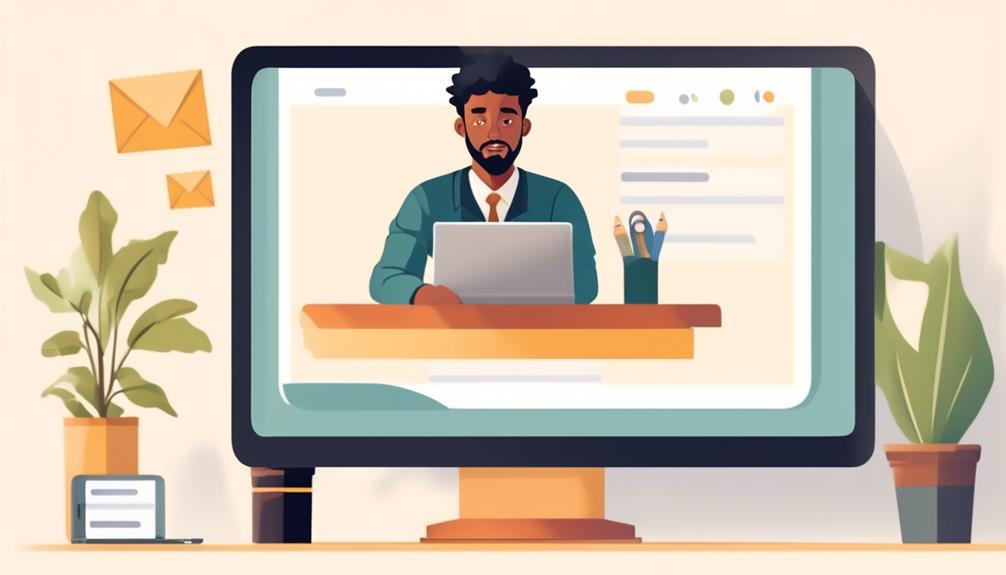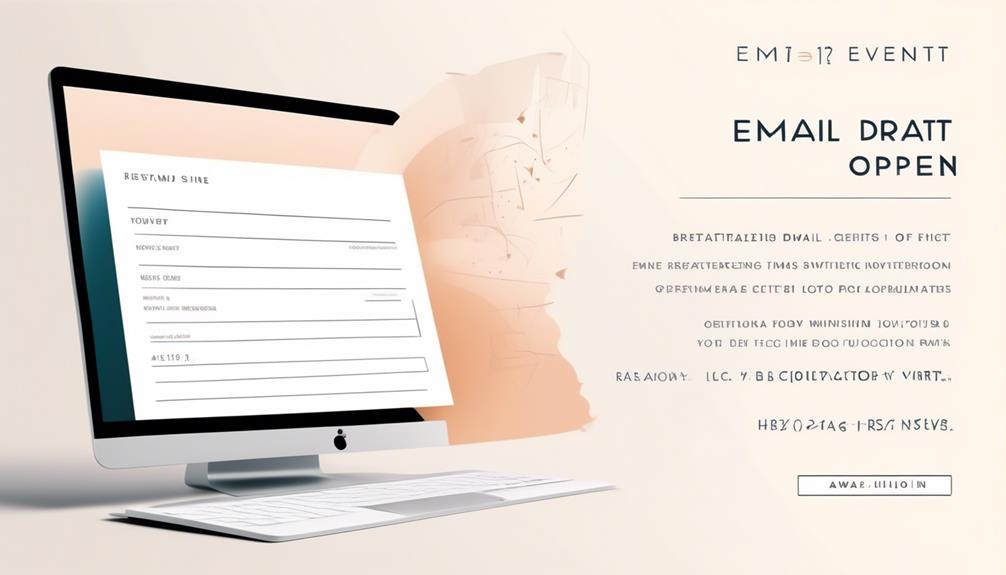In the realm of professional networking, referrals from acquaintances are trusted by 92% of individuals. Creating an engaging referral email could be the crucial step in discovering new possibilities and broadening your circle of connections.
But how do we ensure our referral emails stand out and make a lasting impression? Let's explore the essential elements of a well-crafted referral email that not only captures attention but also yields results.
Key Takeaways
- Referral emails are highly trusted and effective for professional networking and job opportunities.
- Crafting clear and concise referral emails is crucial for success.
- Personalization and engagement are essential in referral emails to build a connection with the reader.
- Structuring referral emails with a compelling subject line, professional format, and clear call to action is important for maximizing impact.
Understanding Referral Emails
Understanding how to effectively utilize referral emails can significantly impact our professional networking and job opportunities. Referral emails are a powerful tool for connecting with potential employers or expanding our professional network within a company or industry. When crafted skillfully, these emails can showcase our skills and qualifications, often leading to valuable job opportunities.
A well-written referral email helps us stand out among other candidates by leveraging the recommendation of a trusted source. It allows us to highlight our strengths and achievements while also emphasizing our interest in the company or position.
Crafting Your Email Content

When crafting a referral email, it's crucial to keep the message clear and concise, ensuring that the recipient understands the purpose of the email right away.
Personalizing the content and making it engaging will help build a connection with the reader, increasing the likelihood of a positive response.
Additionally, ending the email with a clear call to action will guide the recipient on what to do next, making the communication effective and actionable.
Clear and Concise Messaging
Craft your referral email content with utmost clarity and conciseness, ensuring that the recipient clearly understands the purpose and next steps.
Start by capturing attention with a personalized subject line that includes relevant keywords.
Use a professional business letter format to maintain a formal impression and provide clear contact information.
Contextually relevant information is crucial, so emphasize the mutual contact's name in the subject line and opening sentence.
Be direct and explicitly state the purpose of the email in the first line.
Follow this with concise instructions on the recipient's next steps, and conclude with a gracious thank-you.
Avoid unnecessary details and strive for precision.
Personalized and Engaging Content
Engage your recipient with personalized and compelling content that resonates with their interests and needs, creating a genuine connection and prompting them to take action.
When writing a referral email, it's essential to tailor the content to the individual recipient. Mention the mutual contact or connection, such as existing clients or a colleague who referred you, to establish credibility and relevance from the start.
Share a brief and impactful story that highlights why the recipient is qualified for the position or how they'd benefit from your proposal. Use engaging language and visuals, like relevant images or videos, to enhance the appeal and keep the reader interested.
End with a clear call to action, prompting the recipient to take the next steps.
Call to Action Clarity
To effectively prompt the recipient to take action, it's crucial to clearly articulate the desired next steps in the email content, using a professional yet friendly tone to engage them.
When crafting your referral email, it's important to:
- Include a referral's job title and company name to provide specific details.
- Write a referral email template that provides clear instructions on how the recipient can follow through with the referral.
- End the email with a strong call to action, prompting the recipient to take the desired step.
Structuring a Referral Email
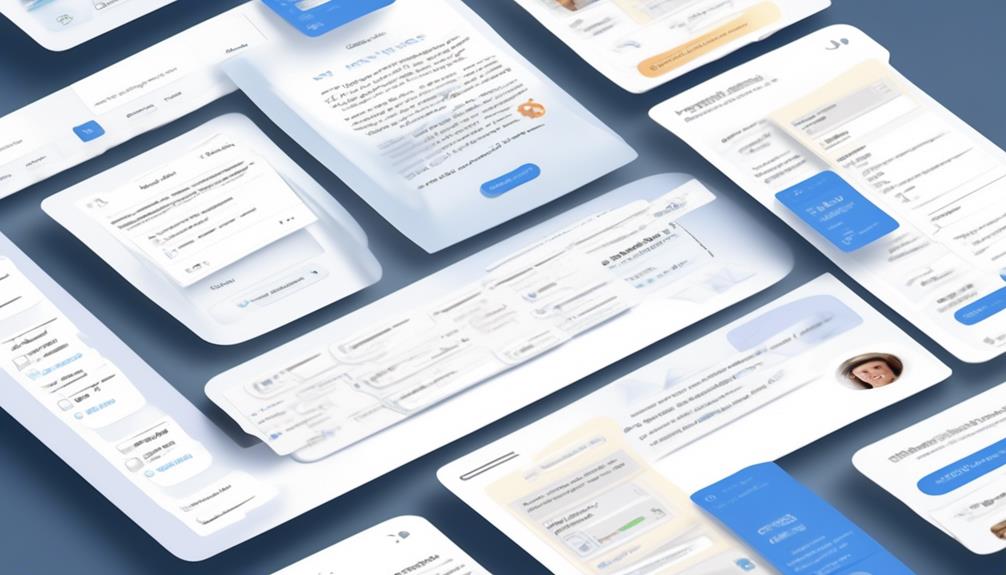
Drawing on our mutual connection, I'm reaching out to introduce a valuable opportunity to you.
When structuring a referral email, it's crucial to ensure that the email is concise and to the point.
Start with a compelling subject line that includes the referrer's name to capture the recipient's attention.
Follow a professional business letter format and include your contact information for a polished look.
Clearly explain how you know the mutual contact and emphasize their name in the subject line and opening sentence to establish credibility.
In the opening sentence, express the reason for the email directly, and be transparent about your request.
Provide clear instructions on the next steps the recipient should take, making it easy for them to act on your referral.
Lastly, express gratitude at the end to show appreciation for their consideration.
Keep in mind that a well-structured referral email is essential for making a strong impression and increasing the likelihood of a positive response.
Utilizing Referral Templates
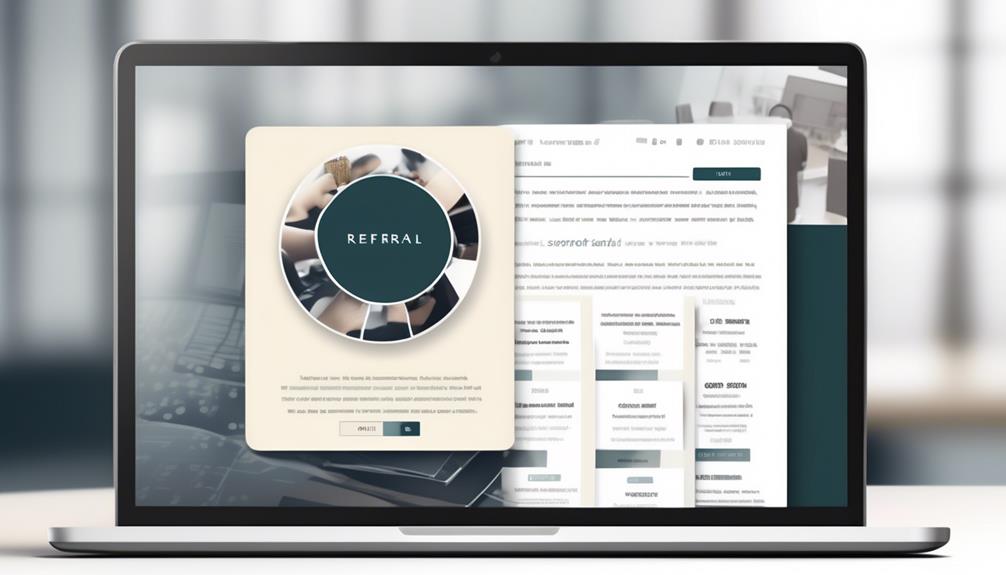
When it comes to writing referral emails, utilizing referral templates can be a game changer. These templates provide a structured framework for your email, ensuring that you cover all the necessary points while maintaining a professional tone.
Template Structure
Utilizing referral templates can streamline the process of writing a referral email and ensure a professional and effective communication with the recipient.
When structuring a referral email template, it's crucial to follow a few key elements:
- Strong Subject Line: Grab the reader's attention by including the referrer's name.
- Professional Format: Format the email like a business letter and include your contact information.
- Emphasize Mutual Contact: Mention the mutual contact's name in the subject line and the first line of the email to establish a connection.
Personalized Messaging
Moving from the foundational structure of a referral email template, we now focus on infusing personalized messaging to enhance the connection with the recipient and maximize the impact of the referral.
When crafting a referral email, personalized messaging is crucial in capturing the attention of the hiring manager. It involves tailoring the content to highlight common connections or shared experiences, making the email more compelling and relevant.
Utilizing referral templates provides a strong subject and framework for structuring the email, while allowing for customization to suit different recipients and contexts.
In personalized messaging, it's essential to emphasize the candidate's unique strengths, such as their employment history and achievements, to effectively showcase their fit for the role.
Examples of Referral Emails

In crafting effective referral emails, incorporating a compelling introduction that highlights your mutual connection and the purpose of reaching out can significantly enhance the likelihood of a positive response. Here are examples of referral emails that effectively demonstrate the key elements:
- Subject: Referred by [Mutual Connection's Name] for [Specific Job Title]
Hi [Recipient's Name],
I hope this email finds you well. [Mutual Connection's Name] suggested that I reach out to you regarding the [Specific Job Title] opportunity at [Company Name]. With my background in [relevant skill or experience], I believe I'd be a strong fit for the job.
Thank you for considering my application. I look forward to the possibility of discussing how I can contribute to your team.
- Subject: Exploring Opportunities at [Company Name]
Dear [Recipient's Name],
I trust this email finds you in good health. I'm reaching out at the recommendation of [Mutual Connection's Name] to explore potential opportunities at [Company Name]. I'm particularly interested in roles related to [specific area or department] and believe that my experience in [relevant experience] could be valuable to your team.
Thank you for your time, and I hope to connect with you soon.
- Subject: Introduction and Request for Assistance
Hello [Recipient's Name],
I hope you're doing well. I'm writing to seek your guidance and support in my job search. As a satisfied customer of [Company Name], I greatly admire how your team [specific achievement or aspect of the company]. I'm confident that my skills in [relevant skill or experience] could benefit your team.
I appreciate any assistance you can provide and look forward to the possibility of connecting with you.
These examples illustrate how to effectively communicate your fit for a position, utilize existing customers to help with your application, and provide clear contact information for further correspondence.
Effective Referral Email Tips
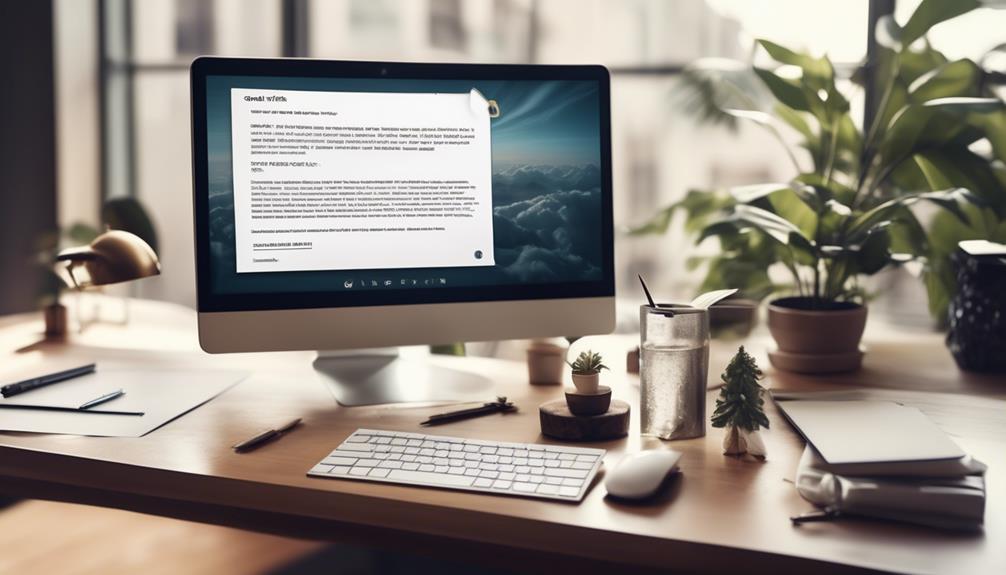
To effectively enhance the impact of your referral email, it's essential to carefully craft a strong subject line that incorporates the referrer's name for attention and to emphasize the mutual connection at the outset of the message. This sets the tone for the rest of the email and immediately grabs the recipient's attention.
It's also crucial to format the email professionally, ensuring that it includes your contact information. When writing the email, be direct about the reason for reaching out in the first sentence. If you're referring someone for an open job, clearly state this at the beginning of the email. Additionally, provide clear instructions for the recipient, such as the next steps they should take.
Ending the email with gratitude is also important, as it shows appreciation for the recipient's time and consideration. When crafting an effective referral email, remember that hiring managers and the company want to see a well-written business letter that highlights the value the referral brings.
Subject Line Strategies
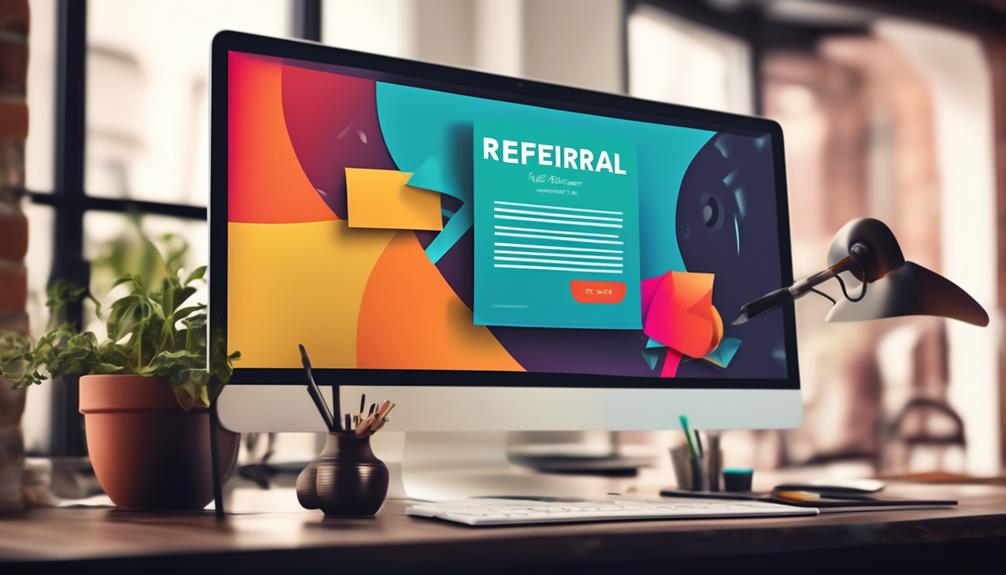
Crafting a compelling subject line is a crucial element of an effective referral email, as it sets the initial tone and grabs the recipient's attention by incorporating the referrer's name and emphasizing the mutual connection.
To create an attention-grabbing subject line for your referral email, consider the following strategies:
- Personalization: Use the recipient's name and the referrer's name in the subject line to make it more personalized and relevant.
- Conciseness: Keep the subject line brief and to the point, clearly stating the purpose of the email.
- Specificity: Consider incorporating the job title or opportunity in the subject line to convey the intent of the email effectively.
Referral Etiquette

Referral etiquette sets the tone for professional interactions and can significantly impact the success of your referral email, guiding you through the process of engaging with potential contacts in a respectful and effective manner. When writing a referral email, it's crucial to adhere to proper etiquette to ensure that your message is received positively. Below is a table outlining key referral etiquette practices:
| Referral Etiquette | Description |
|---|---|
| Subject Line | Include the referrer's name to grab attention. |
| Email Format | Ensure a professional format and include your contact information. |
| Emphasize Mutual Contact | Mention the mutual contact's name in the subject line and first line of the email. |
| Clear Communication | State the reason for the email upfront and provide clear instructions on the next steps. |
| Gratitude | End the email with a thank you to show appreciation. |
Following these etiquette guidelines will help you craft a referral email that is both respectful and effective. By maintaining professionalism and demonstrating gratitude, you can enhance your chances of a positive response and further interaction.
Leveraging Mutual Contacts

Drawing from a shared connection can greatly enhance the impact of your referral email, increasing the likelihood of a positive reception. When leveraging mutual contacts, consider these key strategies:
- Highlight the Shared Connection: Mention the mutual contact's name prominently in the subject line and opening sentence to immediately capture the reader's attention.
- Personalize the Email: Emphasize the shared connection and provide context for reaching out. Explain how you're connected to the mutual contact and why you believe the recipient and your shared contact would both benefit from connecting with you.
- Emphasize Alignment: Clearly articulate how your skills and background align with the recipient's needs. Highlight specific areas where you could be a good fit, possibly referencing the mutual contact's insights or the recipient's job title.
Call to Action in Referral Emails
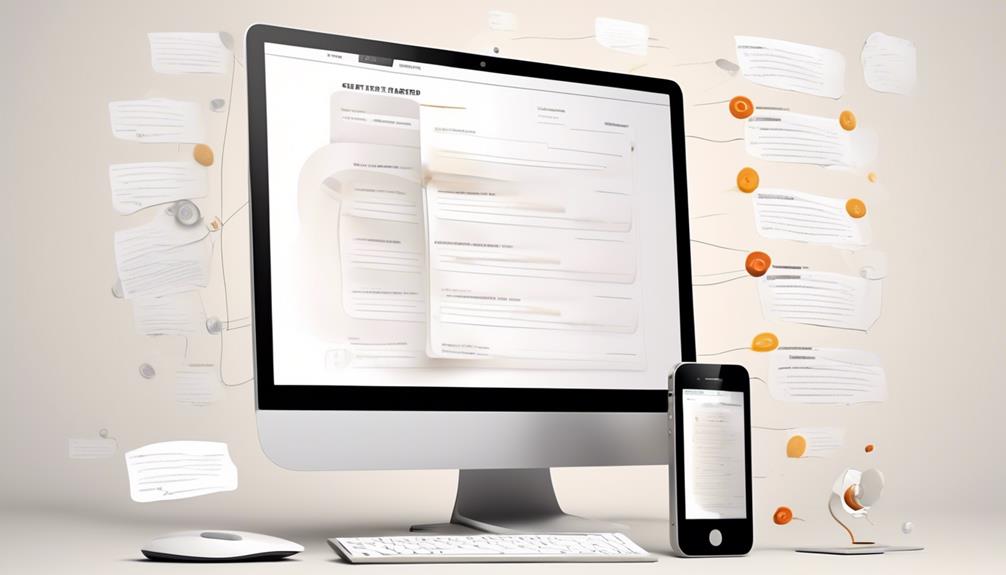
We need to ensure the recipient immediately grasps the purpose of the email and feels compelled to take action, so the call to action in referral emails should be clear and compelling.
When writing referral emails, it's crucial to be in a good position to inspire the recipient to act. The call to action needs to be prominent and persuasive, guiding the recipient on what steps to take next. To achieve this, we should make sure the subject line clearly communicates the purpose of the email, compelling the recipient to open it and take action.
Additionally, the content of the email should express gratitude for the recipient's assistance and provide clear instructions for making the referral. By using a friendly and professional tone, we can create a strong call to action that encourages the recipient to contact the potential referral. Personalizing the subject line and the email's content can also make the call to action more impactful.
Keeping the email concise and to the point will ensure that the recipient understands the next steps for the referral, increasing the likelihood of them taking action.
Can I Use the Same Format for Referral Email and Formal Invitation Email?
When writing a formal event invitation email, it’s important to use a professional tone and proper formatting. However, when sending a referral email, a more casual tone is acceptable. It’s crucial to tailor the tone and format to the specific purpose of the email.
Frequently Asked Questions
How Do You Write an Email to Refer Someone?
When we write an email to refer someone, we highlight their strengths and how they could benefit the recipient. We ensure to include a warm introduction or referral link to make the process seamless.
It's important to be prepared to offer referrals in return. It's also crucial to select the right people to refer and have their contact information handy.
This builds a strong network and fosters mutual support among professionals.
How Do You Write a Referral Letter in an Email?
When writing a referral letter in an email, we emphasize the mutual contact, highlight our experience and qualifications, and express eagerness to learn more about the company.
We also extend a thank you and ensure to align the referral with the job description.
It's crucial to provide concise information, follow company protocols, and follow the internal referral process.
How Do You Write a Proper Referral?
How do we write a proper referral?
We start by emphasizing our mutual connection in the subject line and opening sentence.
We state our purpose clearly, offering concise and necessary information.
We direct the recipient on the next steps and wrap up with a polite thank you.
Our professional business letter format includes contact information and is proofread for grammar and spelling.
This approach ensures our referral is effective and respectful.
How Do You Write a Referral Message?
When writing a referral message, we aim for a compelling subject line that includes the referrer's name to grab attention. We emphasize our mutual contact by mentioning their name in the subject line and first line of the email.
It's important to be direct and state the reason for the email in the first sentence.
Lastly, we provide clear direction on the recipient's next steps and conclude with a sincere thank you.
Conclusion
In conclusion, crafting a compelling referral email is a vital tool in expanding your professional network. With the right subject line, clear instructions, and a gracious thank-you, you can harness the power of referrals to advance your career.
Don't underestimate the impact of a well-written email – it can open doors and pave the way for new opportunities. So, go ahead and unleash the power of your network with a winning referral email!





